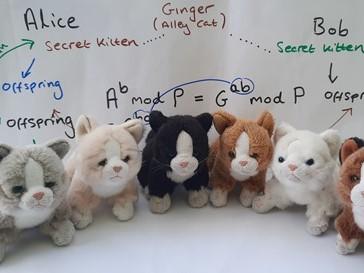Why do higher education institutions (HEIs) collect data on student evaluations of teaching (SET)? The two main reasons are: to provide student feedback to instructors on their teaching effectiveness; and to inform decisions that affect personnel (such as promotions and tenure), salary (merit pay considerations) and faculty career progression (grant applications).
So far, so straightforward. However, a critical issue in the evaluation of teaching effectiveness is how to produce unbiased results. We know that SET results can be influenced by factors that are unrelated to teaching competence but rather are related to individual students (such as their gender, academic level or student year), course (class size, course level, course topic or field of study or discipline) and the instructor themselves (their race or ethnicity, primary language, gender, age or rank).
- Should we be aiming for student happiness or student satisfaction?
- Peer mentoring to support staff well-being: lessons from a pilot
- Good teachers need to be good learners
The questions are, then, how can HEIs use SET results fairly? Are there other effective methods of teaching evaluation?
Here are six key measures that HEIs can take to adequately evaluate teaching effectiveness.
1. Interpret SET results with caution
Context counts. Research has shown that instructors in humanities receive higher ratings than those in science or engineering, for example. Similarly, evidence shows that students tend to give lower ratings in courses that are required than they do in elective courses.
So, those evaluating SET scores should avoid comparing instructors without considering the context. For instance, it is unfair to compare SET results of instructors teaching courses in different disciplines, or one teaching an elective course with another teaching a required course.
Regarding the use of SET results for personnel decisions (such as hiring, tenure or promotion), efforts need to be made by decision-makers to assess whether SET scores correspond with results from other sources of evidence for teaching competence (such as peer reviews or instructor self-evaluation).
2. Gather student feedback throughout the semester
Most HEIs collect SET data once per semester. For optimal use of student feedback to improve teaching, however, SET data need to be collected at several points: a few weeks after the beginning of semester, after the first exam, and towards the end of the semester. For students, completing an SET survey at numerous intervals in a semester is an added demand when they are busy with their studies; however, if instructors explained to students how their feedback would be used to improve the course and teaching, then students would be more likely to fill out teaching evaluations.
3. Allow instructors to add SET questions
Generally, specific questions prompt students to provide better feedback. Even if the standard SET questions are carefully designed, students may offer more useful feedback if they are asked questions directly related to their class. For instance, an instructor who uses a particular instructional technology or invites a guest speaker, for example, to enhance student engagement is likely to receive more useful feedback if the SET survey contains questions related to these specific teaching activities.
4. Engage in peer review of teaching
SET is not the only way to evaluate teaching competence. Peer review is among other sources of information for teaching evaluation. In most HEIs, SET is a mandatory process for all instructors, whereas peer review of teaching is usually a voluntary exercise. Instructors who would like to obtain comprehensive feedback on their teaching should rely on both student and peer-review feedback. Although peer review of teaching is wider ranging than student feedback, it is important to integrate the information provided from student evaluation with that from peer review for an overall assessment of instructors’ teaching effectiveness.
Asking a colleague who you trust and who is willing to provide you with useful feedback on your teaching has many advantages in comparison with student evaluation. Peers (as compared with students) are more capable of evaluating facets of teaching such as curriculum design, development of teaching resources, development of learning activities and assessment.
5. Prepare a teaching portfolio
Another source of information for teaching evaluation is a teaching portfolio. Instructors create a teaching portfolio to reflect on their teaching, offer a record of their teaching effectiveness, and track their development over time. Teaching portfolios include a teaching philosophy and a set of items that can be used as evidence. For instance, instructors can demonstrate their record of teaching effectiveness in their portfolio by providing information on a teaching philosophy and some of their portfolio items (such as a list of courses taught, syllabuses, rubrics developed, in-class observation or student evaluation).
Depending on their specific objective, teaching portfolios differ considerably. However, an instructor’s teaching portfolio needs to include:
- a synopsis of their teaching experience and responsibilities
- a statement of their teaching philosophy and objectives
- a discussion of their teaching approaches and strategies
- activities undertaken to enhance student learning.
If SET ratings are used in isolation (for making decisions related to promotion or tenure, for example) and without alternative measures (such as teaching portfolio), then an instructor’s academic success or failure is solely determined by their students. SET cannot fully capture an instructor’s ability to enhance student learning, so other measures of instructor performance need to be considered.
6. Do a teaching self-evaluation
Self-evaluation is a method whereby instructors gather data on their own teaching activities and then analyse the information to determine their teaching competence and ways to improve teaching practices. For instance, instructors can create a Likert scale template and gather data by rating the degree to which they agree (or disagree) with a statement related to the use of teaching technology or the use of real-world examples to help students understand more easily. Alternatively, instructors can write down what they are good at or what they need to do to improve themselves. Self-evaluation not only gives instructors more responsibility over their teaching but also empowers them to evaluate their own teaching effectiveness. As a tool to improve teaching, self-evaluation helps instructors to develop self-recognition that in turn enables them to develop their ability to help students to learn.
Approach SET scores with care, context and caution
In most HEIs, SET is a generally accepted means of obtaining student feedback on teaching and course quality. However, research shows that SET scores are influenced by variables that are unrelated to teaching. Therefore, caution should be applied when interpreting SET results. In addition, alternative measures of effective teaching need to be considered to enhance the accuracy of the assessment of teaching performance.
Temesgen Kifle is a lecturer in the School of Economics in the Faculty of Business, Economics and Law at the University of Queensland.
If you found this interesting and want advice and insight from academics and university staff delivered direct to your inbox each week, sign up for the THE Campus newsletter.




comment